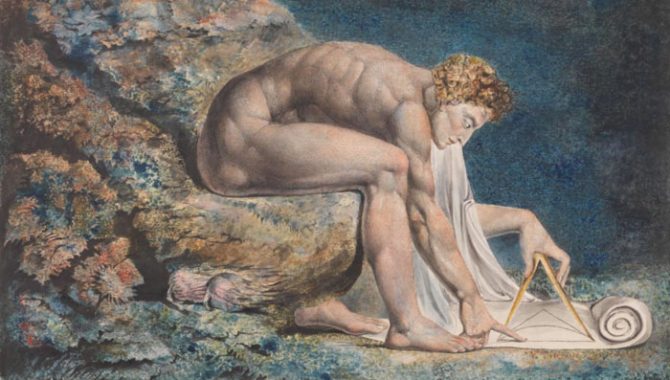—-
To stay in the loop with the latest features, news and interviews from the creative community around licensing, sign up to our weekly newsletter here

Start Licensing’s Ian Downes, Jehane’s Jehane Boden Spiers and Licensing International UK’s Graham Saltmarsh share their insights.
What does a brand need to be ready for licensing? A product-hungry fan-base? Smart, creative assets? A major anniversary on the horizon?
In some cases, especially for out of copyright estates, creating a brand identity for the artist can help in the process of licensing and give the brand an identity in the marketplace. It is a way of grouping assets like artworks together and giving them longer lasting commercial value.
But with so many brands from across multiple industries thriving in this space, are there any properties with major brand potential sitting there still untapped?
We put these questions to Start Licensing’s Ian Downes, Jehane Ltd’s Jehane Boden Spiers and Licensing International UK’s Graham Saltmarsh to get their insights.
 Ian Downes, Director, Start Licensing
Ian Downes, Director, Start Licensing
When is a brand ready for licensing? I tend to go back to basics when thinking about this. When I first started in licensing and worked at Copyright Promotions, I was very lucky to spend time with one of the founders, David Cardwell. Part of my role with David was sourcing new properties for the company to represent.
A key part of David’s advice to me at the time was that any property that we tried to represent should be established and come with an in-built demand. He felt strongly that there should be an established following and audience in place. In short there was a consumer audience who wanted to buy licensed products. I think this is still valid today.
A brand needs to have a following and there needs to be momentum to drive licensing. In some ways, with the advent of e-commerce and direct to consumer selling, this is even more relevant. You can find and target specific brand fans and market directly to them in a more efficient way these days.
Beyond this, I think there has to be sufficient resource in place to support a commercial licensing programme. In addition, there needs to be a ready to use supply of good quality artwork and design materials. I would also say that any brand owner should ask themselves why are we entering the licensing market, what is the purpose behind it and what are our objectives.
As to the question around if there are any sleeping giants waiting to be licensed… Traditionally licensing campaigns seem to be measured by how many licensees are in place. “How many other licensees have you got?” is a standard question from licensees. This question is partly driven by the thought that there needs to be a critical mass at retail to create an impact. I think this is not so much the case these days.
With changes in retailing, the rise of live experiences and the growth of digital platforms, there are new ways to sell. With this in mind, I think it opens the way for licensing campaigns that might only feature one or two products or services, but ones that are well chosen and really appeal to consumers who follow a specific brand. This could and should bring licensing into play for more brand owners.
Of course, licensing is no longer just about physical products. It encompasses areas like live events, immersive experiences and exhibitions. A few suggestions and ideas include using virtual reality to create immersive experiences for sports fans – one example could be the chance to ride in a famous horserace like The Derby or The Grand National…

Technology that allows personalisation also opens up new opportunities for brand owners particularly those with archives. Inspired by The Ashes being on at the moment, one thought I had was that the cricket ‘bible’ Wisden could activate its brand in areas like personalisation, with personalised copies of past editions and other related products. This is an example of a brand that resonates with a significant niche audience and one that can be reached through digital media efficiently these days.

From the world of art, I would put a shout out for an artist called Norman Cornish. Norman was an artist based in the Northeast of England. His paintings captured life in the local villages, many of which were pit villages. He focused on portraits and scenes that succeeded in conveying the lives the villagers lead really well. His paintings are very atmospheric. As an owner of a whippet, I am particularly fond of his paintings of people in pubs with their faithful whippet at their side. A familiar scene to me!
I think Norman’s work would work in a range of licensing categories and licensing would help keep his legacy alive.

 Jehane Boden Spiers, Founder, Jehane Ltd
Jehane Boden Spiers, Founder, Jehane Ltd
When is a brand ready for licensing? Well, as with the act of licensing itself, this thought-provoking question is answered by looking at the layers within. Anyone with experience of the licensing world will know the layers are significant. Looking at the three most common and differing states of ‘ready’ is similarly layered.
Firstly, the adjective: to be in a suitable state for action and fully prepared or easily available and within reach. Secondly, the noun: available cash, ‘ready’ money. Thirdly, the verb: to prepare (someone or something) for an activity or purpose. To be ready to enter a competitive market a brand needs to have a combination of all three qualities.
A clear, developed, and prepared identity is key. Being able to think differently as a brand is crucial; being innovative is key to staying successful. A brand must be poised to communicate their message and understand the impact. Consumers have to really value the brand before they invest their available money in it. Preparation and mindset is key.
Brands need to be pro-active and engage the zeitgeist with a consistent voice and visual narrative in order to optimise the moment and be fit for purpose.
Are there any sleeping giants waiting to be licensed? My pick is Austrian designer Josef Frank, one of Vienna’s early modernist figures. He questioned the purity of modernism in the early 1920s, working against the principal that modern equalled uniform design. Frank’s flourishing, organic designs are full of colour and life.
 Frank fled the rise of anti-Semitism in Vienna in 1934 for Sweden and the design house Svenkst Tenn. One of Sweden’s most important designers of all time, there are over 2000 furniture sketches and 160 textile prints in the Svenskt Tenn archives.
Frank fled the rise of anti-Semitism in Vienna in 1934 for Sweden and the design house Svenkst Tenn. One of Sweden’s most important designers of all time, there are over 2000 furniture sketches and 160 textile prints in the Svenskt Tenn archives.
Frank has received recognition and inspired designers all over the world whilst his own designs are kept closely under the wing of Svenskt Tenn. Frank’s work follows on from the work of the legendary print designer and role model William Morris.
As and when the opportunity to license Frank’s archive more broadly is awakened, the interest from licensees will undoubtedly be colossal.

 Graham Saltmarsh, MD, Licensing International UK
Graham Saltmarsh, MD, Licensing International UK
My pick for a sleeping giant would be the art of William Blake. Where to start with this most extraordinary man! Certainly not everyone’s cup of tea – and his art can be challenging – but this writer, poet and printmaker has certainly influenced the world in ways many people wouldn’t realise.
He was deeply religious but at the same time despised the church for “it’s suppression of natural desires and that it discouraged earthly joy”. From an early age he saw visions and claimed to have seen a tree full of angels when he was 10 years old. He was encouraged by his friend John Varley to paint these visions and his vision of the Ghost of a Flea gives a glimpse into a mind constantly in turmoil and torn between Heaven and Hell.
 Blake saw many visions which influenced his writing and his art. He said archangels encouraged him to create his works and claimed to have seen Satan on a staircase in South Molton Street in Mayfair, which just goes to show that the Prince of Darkness preferred the nicer areas of London
Blake saw many visions which influenced his writing and his art. He said archangels encouraged him to create his works and claimed to have seen Satan on a staircase in South Molton Street in Mayfair, which just goes to show that the Prince of Darkness preferred the nicer areas of London
He initially supported the French revolution until the rise of Robespierre and his reign of terror changed his mind. He would debate with the intellectuals, dissidents and philosophers of the day and shared Mary Wollstonecraft’s views on the equality of the sexes and believed that women should have equal rights to men.
Blake abhorred slavery and believed in racial and sexual equality. Several of his poems and paintings express a notion of universal humanity and he was outspoken in his support of this in his art and poems.
His creativity inspired future generations of writers and film makers; no one who has ever seen Red Dragon – which was the prequel to Silence of the Lambs – is ever likely to forget it.
 And if you still feel you don’t know William Blake, you might be familiar with his poem Jerusalem…“And did those feet in ancient times walk upon England’s pastures green…”
And if you still feel you don’t know William Blake, you might be familiar with his poem Jerusalem…“And did those feet in ancient times walk upon England’s pastures green…”
The works of William Blake are out of copyright but his works are held by galleries and museums around the world so they may well hold copyright in the professional photographs they have taken of their works. The British Library also hold copies of his extraordinary, illustrated books.
He might not be an obvious choice for a licensing programme, but his artworks once seen are never forgotten.
Enter your details to receive Brands Untapped updates & news.